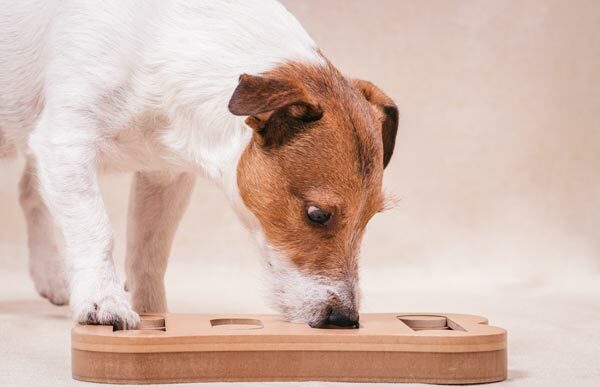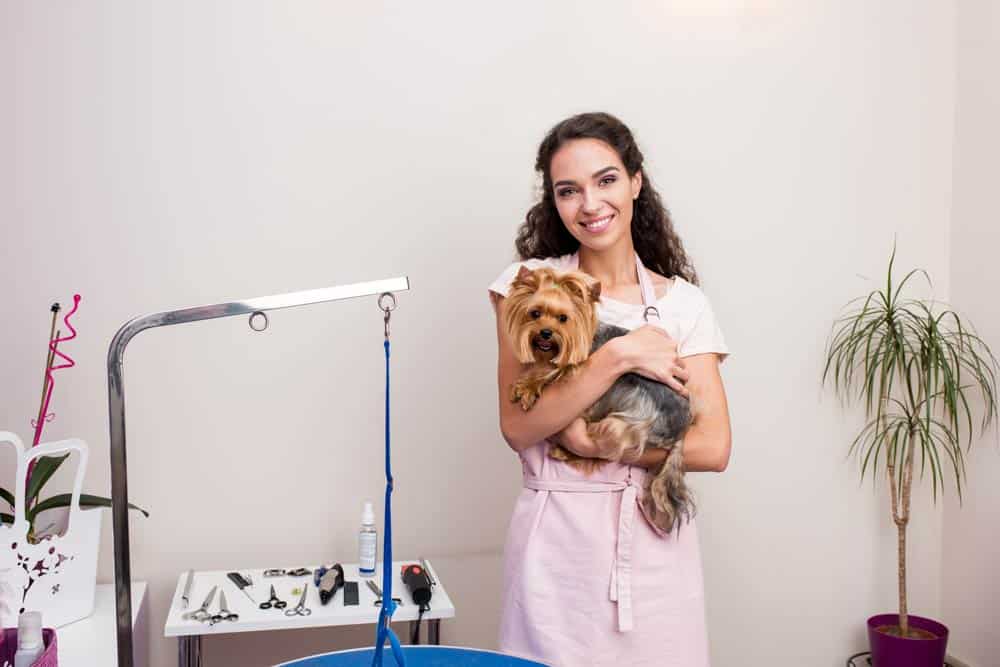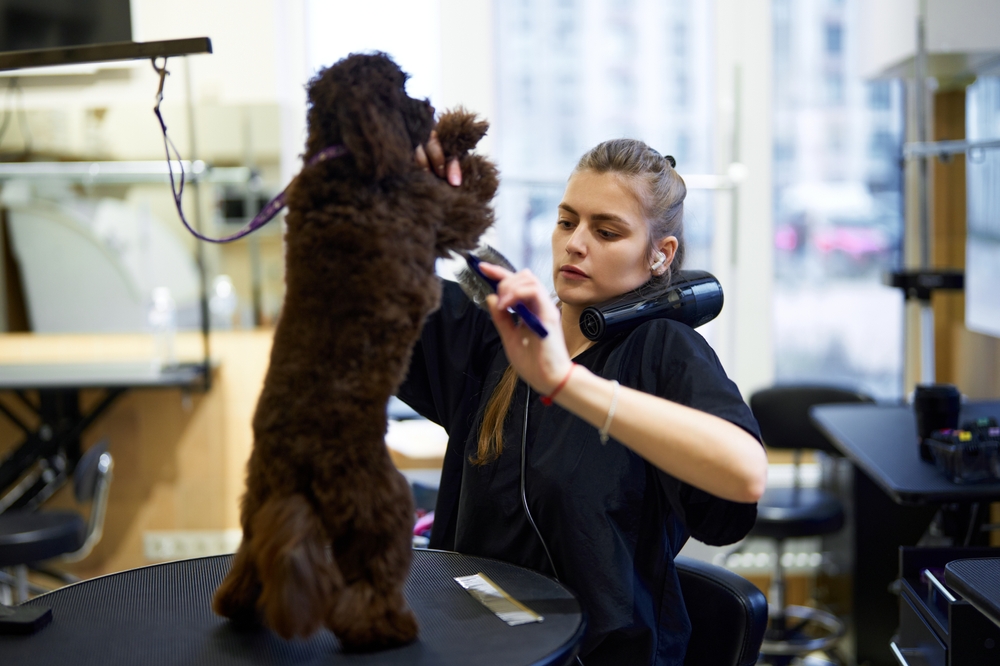An idle mind is the Devil’s workshop. This is true for humans and dogs. A lack of mental stimulation for dogs and humans has negative consequences. While some downtime is healthy for all of us, nothing good can come from persistent boredom.
Now imagine your favorite preschooler with hours of time and nothing to stimulate them mentally. It would not end well! As a canine caregiver, you’ve experienced this with dogs firsthand.
Dog behavior specialists believe canine cognition levels match the cognition levels of humans at ages three to five years. Just like human caregivers plan novel ways to stimulate their kid’s brains, dog caregivers need to provide brain games for their dogs.
Explore ways to provide mental stimulation for dogs below.
What We Know About Dog Brains
We know that exposing dogs to more complex environments increases the size of their brain and increases connections between existing neurons. Dogs that have the opportunity to solve problems, learn new things, and navigate novel experiences are happier. Just like humans!
Brain Games for Dogs
When you think about brain games for dogs, think about stimulating all five senses. Smell (of course!), taste, sight, hearing, and touch.
Also, remember the importance of variety. Dogs will get bored with the same two or three stuffed squeaky toys. Rotate toys in and out. Rotate games in and out.
Let’s look at some examples of brain games for dogs.
Play Hide and Seek
Do you remember this game from childhood? If you have a child you probably know that at a certain age, this game never ever gets old! Dogs are no different. They love to play hide and seek.
The good news is that dogs are happy to always be the seeker. And dogs are just as excited to seek you, a toy or food. If you’ve never done this before, start out by hiding you, the toy or food in a place that your dog will successfully find.
With each success, you can make hiding places more challenging to find.
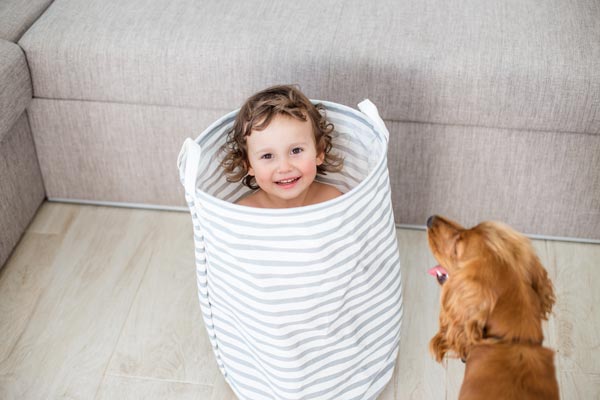
Set Up an Agility Course for Them
Agility courses are great brain games for dogs. If you have a large open space at your disposal, you can set up an agility course for your dog. Here are some easy ideas to get started.
Set up a seesaw. Teach your dog to run up one side, wait for its weight to shift the plank, then run down the other side.
Create a tunnel from empty boxes or use a child’s flexible fabric tunnel. Teach your dog to run through the tunnel.
Place cones in a line with enough space for your dog to weave around them.
Food rewards work especially well here to get your dogs attention. High-value food is a great reward when they learn and complete an obstacle.
Teach Them New Words and New Tricks
Did you ever wonder if dogs recognize words? Not in the way humans do, but researchers do believe that dogs can associate a sound with an object. Teaching your dog the different names for each toy instead of referring them all as a toy.
Go fetch your ball! Go fetch your tug-o-rope! Go fetch your squeaky squirrels!
You can also teach your dog new tricks. During the puppy stage, it seems like a herculean task to just teach sit, stay, come, and down. Most dog parents are pooped out (pun intended) from puppy training and stop there.
But once you have these basics down pat, teaching increasingly complex tricks will build your dog’s confidence and focus. Experts tell us that dogs of all ages can learn new tricks.
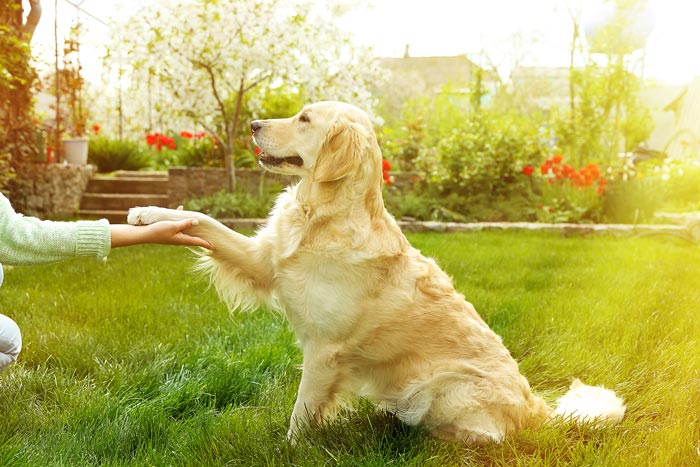
Shape a New Behavior
If you and your pup are up for a challenge, shaping a new behavior can lead to some pretty cool stuff like ringing a bell, bringing you the newspaper and flipping light switches.
Shaping simply means taking a complex behavior and breaking it down into small steps. Your dog is rewarded as each movement is learned.
An example of how shaping works is teaching your dog how to stack the rings on a kid’s ring toss toy. You might break the behavior into the following steps.
First, teach your dog to touch the stick with his nose. Second, teach your dog to pick up and carry a ring. Third, teach your dog to drop the ring near the stick. Reward your dog each time the ring hits the stick or stick platform.
Eventually, your dog will accidentally drop the ring on the stick. When that happens – CELEBRATE BIG TIME!
Give Them Puzzles & Brain Games to Solve
If you type in the search term brain games for dogs into a certain online retail site, you will get thousands of products that claim to erase boredom from your dog’s life for hours. Depending on the dog and the game, that may be true.
But the real value in the wonderful world of dog toys and games is they provide mental stimulation for your dog when you’re not home or are too busy to play.
Different dogs prefer different types of games. Some can spend hours working to get a treat out of a Kong. Others may get bored of that quickly but will love a floor puzzle with lids and knobs.
An easy homemade brain game for dogs uses a muffin tin and tennis balls. Hide treats in the tin and cover each muffin well with a tennis ball.
Play with Them
Your dog loves being with you. Interacting with you and learning to please you is mental stimulation. Brain games for dogs that require your participation are a great bonding experience for the two of you.
Research has shown that the area of a dogs brain associated with reward is stimulated as much by seeing their owner as by food.
Imagine your dog’s delight with brain games that involve you and food rewards!
A great brain game for dogs is the shell game. You may have played this yourself on a city street corner. Take three opaque plastic cups. Let your dog watch you place a very yummy smelly treat under one of the cups.
Shuffle the cups around and see if your dog can pick the one with the treat under it.
Nothing Good Comes of Boredom: Brain Games For Dogs Can Help!
Dogs want to participate in meaningful activities. They want a job to do. Brain games for dogs feel like meaningful work for them.
You can help your canine customers achieve a happy and healthy disposition by providing them with regular mental and physical stimulation while in your care. But as a busy canine caregiver, it can be tough to find the time to develop novel activities and teach new behaviors.
Make sure you are taking advantage of technology to operate your pet business, so you have the time to develop happy and healthy canine customers!
